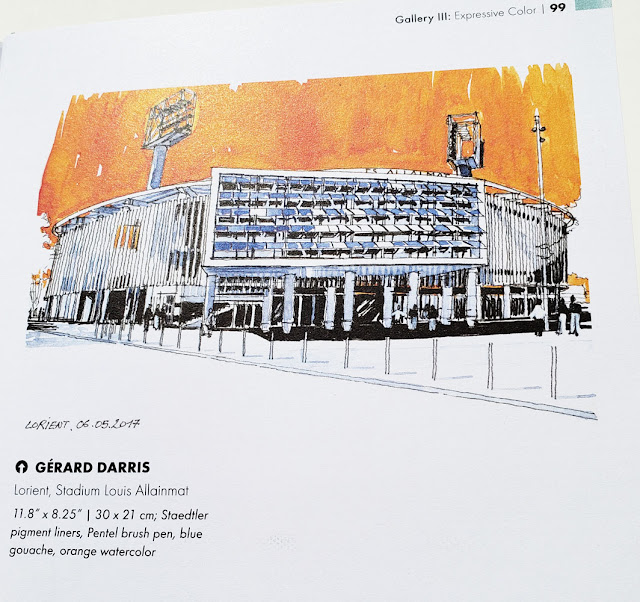 |
| 4/23/19 Maple Leaf neighborhood |
In Shari Blaukopf’s book, Working with Color, I saw many appealing examples of limited color palettes.
Shari herself showed examples of the lovely, cohesive paintings she achieves by
using only three primaries, and other artists made striking sketches using just
one distinctive hue plus black.
Since
I often think about using a limited palette to minimize my sketch kit, seeing these examples reignited my
interest in trying again, but this time with a specific purpose in mind:
helping me see and interpret values.
 |
| 4/22/19 Green Lake neighborhood |
I
tried a similar exercise last year with limited, unrealistic hues, hoping to trick my brain into ignoring the local
colors and seeing the values more easily. This time I am using two
high-contrast colors only – one warm and one cool. I tried the green and orange
sketch first, assigning orange to the lighter values and green to the darker
values. Where the value was darkest, I mixed orange and green together.
The
orange and green I chose didn’t have high enough contrast for my purpose, so
next I chose a red/blue (or more specifically, vermillion and Prussian blue)
bicolor editing pencil (above). This time I assigned red to lighter values and blue to
darker. These hues had the added benefit of better evoking warm/light and cool/shade.
This sketch required playing serious mind games with myself! The truck was
actually dark red, so it was very tempting (and natural) to use red to sketch
it . . . but squinting at it, I could see that its values were mostly dark
except for reflections on top. So I sketched it in blue (partially from memory,
since it drove off before I could finish).
Also,
the caution diamond in the traffic circle was, of course, bright yellow, and
the traffic cone (why was it there? Who knows) was bright orange, and I was so
tempted to use the appropriate colors! But in fact, they were in shade, so I
tried to hint at their warmer local hues while coloring them mostly blue.
I
find it helpful to codify values this way by assigning unrealistic hues to
them. Even better, I like the effect of the red and blue used together beyond
the purposes of the exercise.
 |
| A vintage Mitsubishi editing pencil |
Geek
note: The red/blue editing pencil is a vintage Mitsubishi. You may recall that
I have a particular fondness for bicolor pencils, even though most are not useful to me. This Mitsubishi has strong
pigment and is pleasantly soft to use. Its contemporary version has the same cores, as far as I can tell. (A reason to
use bicolor pencils always makes me happy!)
Updated 6/28/19: Here's an article containing interesting history about vermilion and Prussian blue.
Updated 6/28/19: Here's an article containing interesting history about vermilion and Prussian blue.




























































